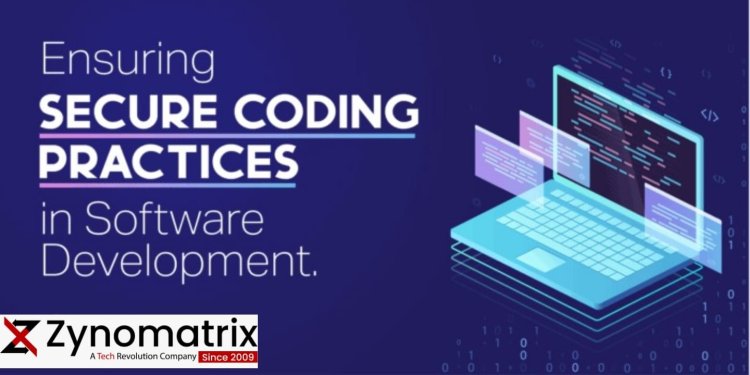Best Practices for Secure Coding
Our blog is a comprehensive resource dedicated to secure coding best practices. We delve into the critical aspects of building secure software applications, equipping developers with the knowledge and techniques to mitigate vulnerabilities and protect against cyber threats. Through informative and practical articles, we cover a wide range of topics related to secure coding. From input validation and authentication to handling sensitive data, preventing common vulnerabilities like cross-site scripting (XSS), and conducting effective security testing, our blog offers actionable insights to fortify your code.

Introduction:
Start with an overview of the importance of secure coding and its role in developing robust and secure software applications. Secure coding involves adopting proactive measures throughout the development process to prevent vulnerabilities and protect sensitive data. It encompasses practices such as input validation and sanitization, secure authentication and authorization, protection against cross-site scripting (XSS) attacks, secure error handling and logging, and much more.By implementing secure coding practices, developers can fortify their applications against threats such as injection attacks, data breaches, unauthorized access, and information disclosure. Emphasizing security from the outset reduces the risk of vulnerabilities being exploited and enhances the overall trustworthiness and reliability of the software.
OWASP Top Ten: Discuss the OWASP (Open Web Application Security Project) Top Ten vulnerabilities, covering common security risks such as injection attacks, cross-site scripting (XSS), and insecure direct object references. Provide guidance on how to mitigate these vulnerabilities in code.
Input Validation and Sanitization: Highlight the significance of input validation and sanitization to prevent injection attacks and ensure the integrity of user-provided data. Discuss techniques such as white-listing, parameterized queries, and input filtering.
Secure Authentication and Authorization: Explore best practices for implementing secure authentication and authorization mechanisms, including password hashing, session management, and role-based access control (RBAC).
Cross-Site Scripting (XSS) Prevention: Discuss strategies for mitigating XSS attacks, such as input/output encoding, context-aware escaping, and Content Security Policy (CSP) implementation.
Protecting Sensitive Data: Cover techniques for safeguarding sensitive data, including encryption, secure storage practices, and proper handling of Personally Identifiable Information (PII).
Secure Error Handling and Logging: Discuss the importance of secure error handling and logging to prevent information disclosure and aid in debugging. Highlight techniques such as proper error messages, log sanitization, and secure logging practices.
Security in Third-Party Libraries and Dependencies: Address the risks associated with using third-party libraries and dependencies, and provide tips for conducting security assessments, keeping dependencies updated, and following secure coding practices when integrating external code.
Secure Configuration Management: Explore best practices for securely managing configuration files, credentials, and environment-specific settings. Cover topics like secure storage, separation of sensitive data, and the use of secure secrets management solutions.
Regular Security Testing and Code Reviews: Emphasize the importance of incorporating security testing and code reviews into the development process. Discuss techniques such as static code analysis, dynamic security testing, and peer code reviews to identify and address security vulnerabilities.
Secure Coding in Specific Programming Languages: Provide language-specific guidelines and best practices for secure coding, addressing common security pitfalls and recommended approaches for languages like Java, Python, JavaScript, etc.
Secure Development Lifecycle: Discuss integrating secure coding practices into the software development lifecycle (SDLC), including requirements gathering, design, implementation, testing, and maintenance. Highlight the benefits of a proactive approach to security.
What's Your Reaction?





















